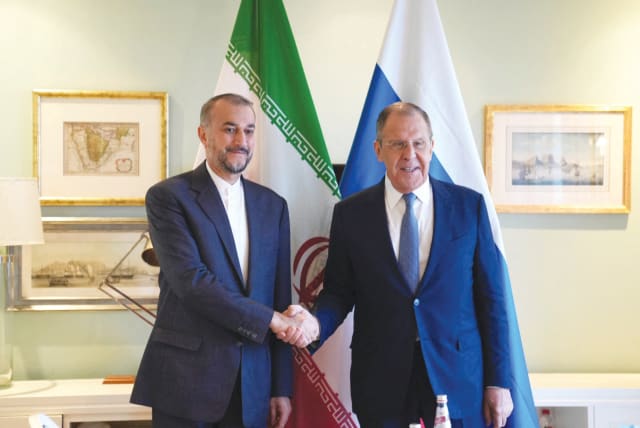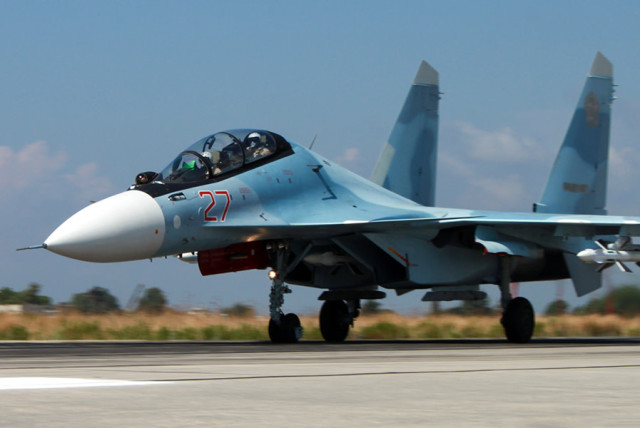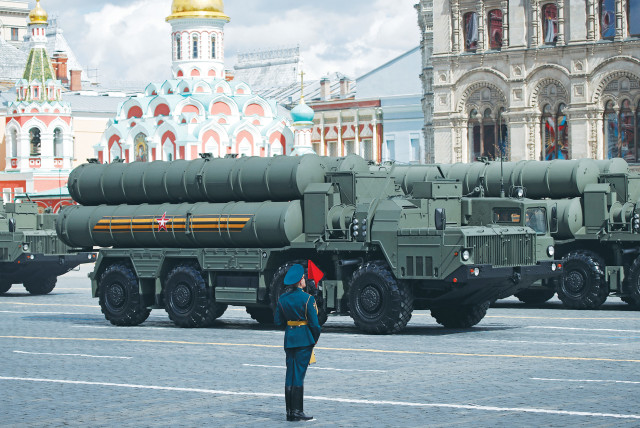Russian aid to Iran: what deals are being made in dangerous partnership?

Intelligence sources say that Tehran's growing partnership with Moscow has led to secret weapons deals.
Numerous intelligence sources say that Tehran's growing partnership with Moscow strengthens the capabilities of both countries.
Last March, a Russian arms manufacturer invited an Iranian delegation for a "shopping tour" of its arms factories. The 17 visitors were treated to lunches and cultural shows. On the last day, they toured a factory that produces coveted military products in Tehran - advanced Russian air defense systems for shooting down enemy planes.
America has sanctioned the plant, NPP Start, in the city of Yekaterinburg because of its support of Russia's war against Ukraine. Among NPP's cargo can be found mobile launchers and additional components for anti-aircraft batteries - including Russia's S-400, which military analysts estimate is capable of detecting and destroying stealth fighter jets flown by Israel and the United States.
The tour in question symbolizes what intelligence sources describe as a deepening strategic partnership between Moscow and Tehran in the two years since Russia's full invasion of Ukraine. This alliance may prove significant in the not-too-distant future.
Iran and Russia's secret military deals
Iran opened a dangerous new chapter in its relations with Russia when it agreed in 2022 to provide thousands of drones and missiles on the battlefield to help Moscow in its war against Ukraine. The expanded ties have now helped forge drone agreements between Moscow and Tehran, including a commitment by Russia to provide its ally with advanced fighter jets and defense technology assets that can help Tehran harden its defense against any future air attack by Israel or the United States.
It is not known how many of the systems have been supplied and deployed. Still, the Russian technology could make Iran a far more formidable adversary, with an improved ability to shoot down aircraft and missiles, experts said. The arms deals, some of which have not been previously reported, are part of a broader cooperation that includes the joint production of military drones within Russia, the sharing of anti-jamming technology, and real-time battlefield assessments of weapons deployed against NATO.
The cooperation reaps significant benefits for both countries while raising Iran's status from a junior ally to a strategic partner, officials said. "It's no longer the patron-client dynamic, where Russia has the upper hand," said Hannah Notte, director of the Intelligence Studies Program at the James Martin Center. "The Iranians are benefiting from this development. There is a transfer of knowledge. It is profitable."
Intelligence sources have described Russia as "pushing" secret agreements to supply Iran with Su-35s, one of Russia's most advanced fighter-bombers and a potentially significant upgrade for an Iranian air force made up mostly of rebuilt American and Soviet aircraft. Russia has also pledged to provide technical help with Iranian spy satellites, as well as to help build rockets and put more satellites into space.
There is no public evidence that the Su-35s have been delivered. The delay may be due to delays in payment on Iran's part, according to a US intelligence source with detailed knowledge of the deal. On the defensive side, Iran has long sought Russia's leading anti-aircraft missile batteries to protect its nuclear and military facilities from a possible attack by the US or Israel.
In 2007, Tehran made a deal to purchase the Russian S-300 anti-aircraft system, but Moscow delayed the delivery of the weapons amid pressure from the United States and European powers. The ban that was imposed ended in 2016, and Iranian S-300 aircraft became operational in 2019. Iran has since requested to purchase the S-400 system.
Some versions of the S-400 are equipped with radars that can defeat stealth technology used by modern fighter jets. Russia has deployed the S-400 to protect its military bases in Syria, and the batteries pose a deadly threat to US and Israeli military aircraft that occasionally operate in the area.
In addition to the thousands of drones purchased from Iran, Russia agreed late last year to purchase about $2 billion worth of additional military goods, including anti-drone defense systems that have become a priority for Russian generals in Ukraine, according to two intelligence sources.
Iran has separately agreed to sell surface-to-surface missiles to Russia for use in Ukraine and, according to a new intelligence assessment, is expected to begin transferring the weapons soon. Spy agencies have so far seen no evidence that the missiles were delivered, officials said.
Intelligence officials said the production of battlefield drones has evolved into a joint venture between the two countries. Initially, Iran's supply of drones to Russia was an attempt by Tehran to help its ally seal the deal on its military campaign against Ukraine. Russia, which had few drones on the battlefield at the start of the war, began using two types of Iranian-made drones in the fall of 2022: the long-range, stealthy Shahed-131 and the Shahed-136.
By mid-summer 2023, Russia had begun producing Iranian-designed Shahed-136 drones at a plant in Yelabuga, a town in Russia's Tatarstan region, east of Moscow. Russian documents obtained by The Washington Post last year described plans to produce 6,000 drones by the summer of 2025.
Recently, Moscow and Tehran began working together on new types of unmanned aerial vehicles, or drones, according to intelligence sources and leaked documents. The trove of Russian and Iranian emails and records released by the hacking group Prana Network was allegedly stolen from an Iranian server linked to the Revolutionary Guards earlier this year.
Versions of the jet-powered drone, dubbed the MS-237, Shahed-238 and Shahed-236, have been described as having a top speed of around 400km/h - about three times that of previous models of Iranian drones. Tehran revealed the existence of the new drone at an air show in November. At the demonstration, the jet drone - codenamed "motorboat" in Russian internal communications - "successfully took off, performed the missions... and landed successfully by parachute," according to a leaked Russian report. "Given its high speed, the 'motorboat' is actually a cruise missile."
Jerusalem Post Store
`; document.getElementById("linkPremium").innerHTML = cont; var divWithLink = document.getElementById("premium-link"); if (divWithLink !== null && divWithLink !== 'undefined') { divWithLink.style.border = "solid 1px #cb0f3e"; divWithLink.style.textAlign = "center"; divWithLink.style.marginBottom = "15px"; divWithLink.style.marginTop = "15px"; divWithLink.style.width = "100%"; divWithLink.style.backgroundColor = "#122952"; divWithLink.style.color = "#ffffff"; divWithLink.style.lineHeight = "1.5"; } } (function (v, i) { });


